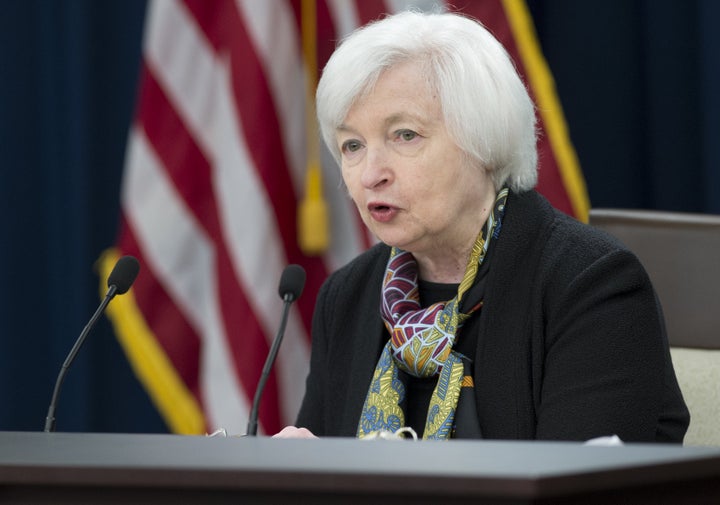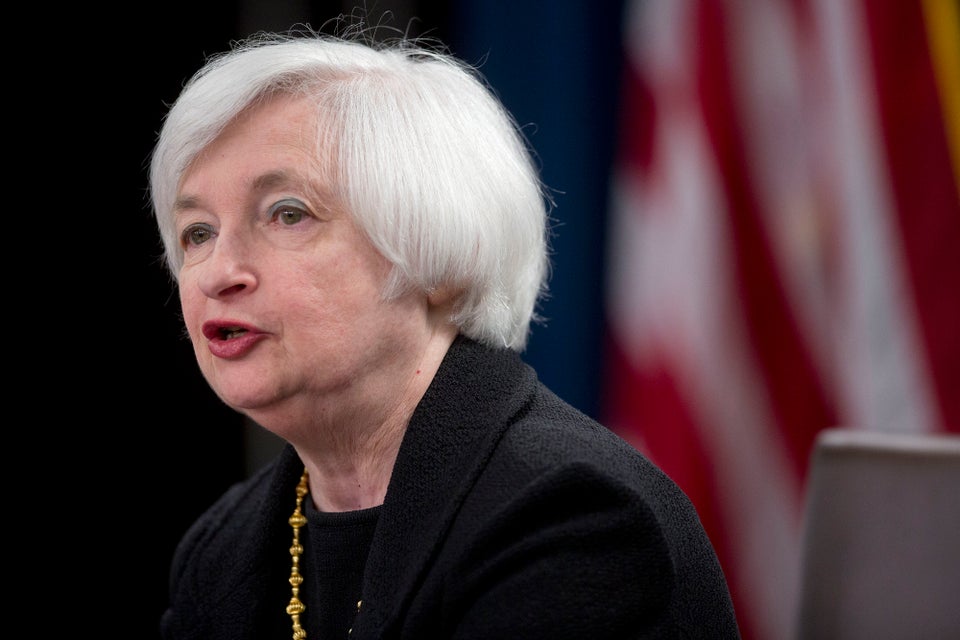The Federal Reserve announced on Wednesday that it is leaving its benchmark interest rate unchanged, a move designed to encourage recently robust job creation to continue.
The decision by the Federal Open Market Committee, the central bank panel charged with adjusting its influential federal funds rate, means Americans will likely avoid paying higher interest rates on their mortgages, car payments and other loans.
The influential federal funds rate, or the interest rate banks charge one another for overnight lending, will remain at a target range of 0.25 to 0.5 percent. The Fed raises the interest rate to head off rising price inflation by slowing the pace of job market growth.
“With appropriate monetary policy, we continue to expect moderate economic growth, further labor market improvement and a return of inflation to our 2 percent objective in 2-3 years,” Federal Reserve Chairwoman Janet Yellen said at a press conference announcing the decision. “However, global economic and financial developments continue to pose risks.”
The last time the Fed raised the federal funds rate was in December, the first time since the 2008 financial crisis. It is a testament to the tenuous state of the economic recovery eight years later that the Fed is still exercising so much caution.
Wednesday's decision was widely expected, in light of modestly gloomier global economic conditions and lackluster U.S. wage growth.
As investors have become more anxious, credit has become harder to obtain in the United States. The tighter lending had the same depressing effect on the economy as a 1 percentage point Fed rate hike, according to economists at Goldman Sachs.
The dollar also continues to rise relative to foreign currencies, making U.S. exports less competitive.
And while the U.S. economy continues to produce jobs consistently, wages declined in February.
Yellen acknowledged that the robust job market had yet to produce significant wage growth.
“I must say, I do see broad-based improvement in the labor market and I’m somewhat surprised we’re not seeing more of a pickup in wage growth,” she said. “It is one of the factors that suggests to me there is continued slack in the labor market.”
Inflation is finally approaching the Fed’s 2 percent target, however, indicating that the Fed may soon have the evidence it needs to raise the interest rate when the FOMC meets again in April.
The price of consumer goods, excluding food and energy, rose 1.7 percent growth in the 12 months ending in January, according to the price index favored by the Fed.

Indeed, all ten sitting members of the FOMC, as well as the seven regional Federal Reserve bank presidents not on the committee, believe economic conditions will allow for an interest rate hike before the year's end.
The 17 officials' predictions, however, released in a survey known as the "dot plot," show greater pessimism about the economy than when the Fed last met. The officials' median projection is that the Fed will raise the interest rate to 0.9 percent by the end of 2016, compared with the December 2015 median projection of 1.4 percent.
One sitting FOMC member, Kansas City Federal Reserve Bank President Esther George, voted against the decision, favoring a 0.25 percent rate hike at this time.
In a week dominated by presidential election and Supreme Court nomination news, the Fed’s announcement stands to draw only moderate attention.
But the lack of a rate hike, which gives the economy more leeway to grow unencumbered, is probably good news for Hillary Clinton’s presidential candidacy. The putative Democratic front-runner is poised to benefit from a positive economic outlook, since voters are more likely to return an incumbent party to power if the economy is doing well.
Public opinion polls and the populist electoral mood in both political parties suggest that voters still do not feel their economic fortunes palpably improving, despite a record streak of job growth. Many analysts argue that the lack of a political upside to the high-performing economy is because Americans are, on average, not making much more money.
That is why progressive economists and activist groups have been calling on the Fed to allow unemployment to dip even lower, so employers will begin raising wages more significantly in order to compete for workers.
The progressive Fed Up coalition, comprising groups representing low-income workers and communities of color, is calling on the Fed not to raise the benchmark interest rate at all in 2016.
“The Fed needs to connect the dots with reality: involuntary part-time work is still almost double pre-recession levels, labor force participation rates are still low, Black unemployment is more than double white unemployment and Latino unemployment and underemployment is still at crisis levels, and wage growth is almost non-existent,” Dushaw Hockett, executive director of SPACES, a Washington, D.C. community group that is part of the Fed Up coalition, said in a statement.
“Rather than slowing down progress, the Fed should do all it can to facilitate growth in 2016 and beyond.”

